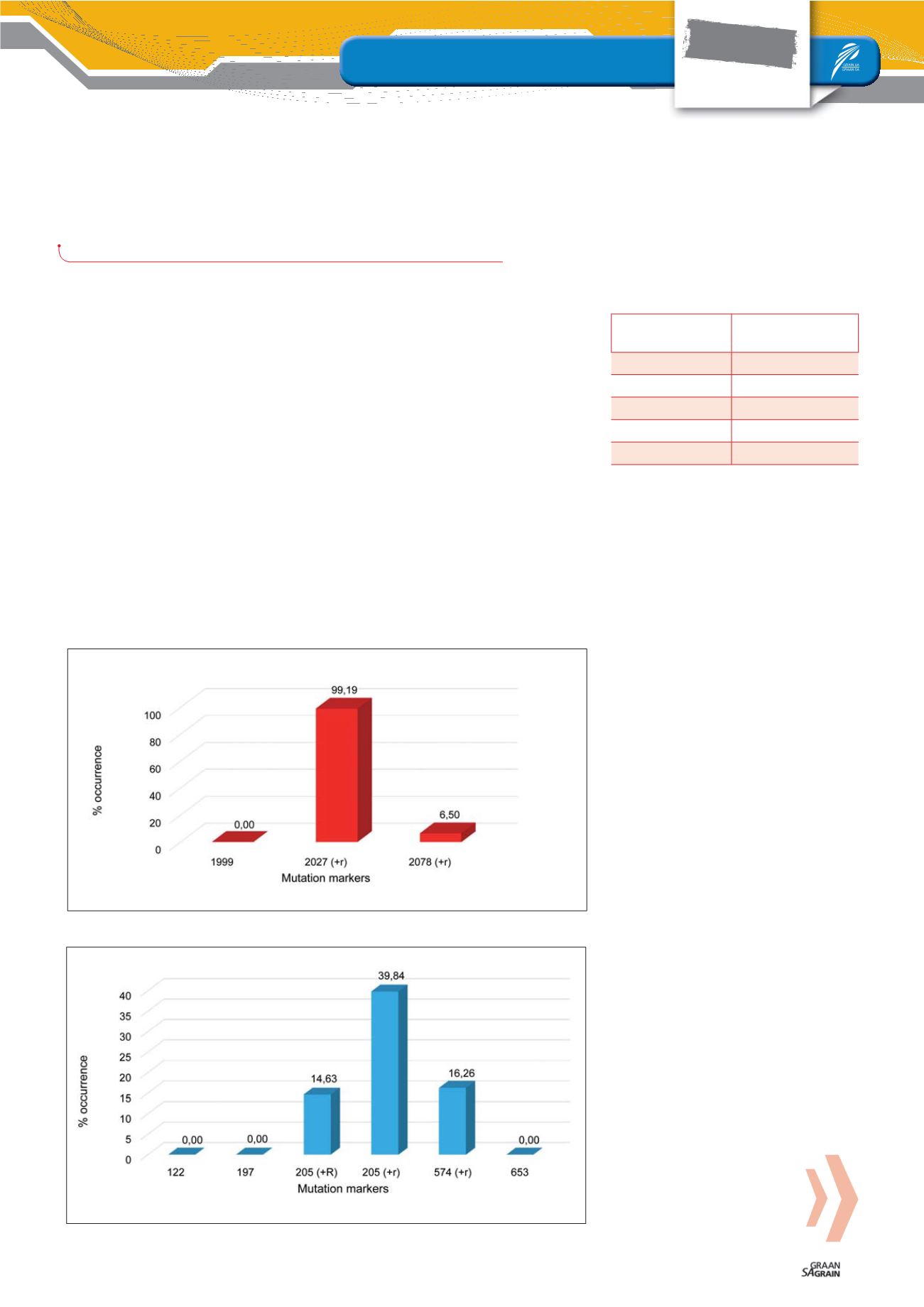

77
September 2017
FOCUS
Integrated pest control
Special
Target-site resistance in wild oats
W
ild oats (
Avena fatua
) is a cos-
mopolitan grass-type weed
that is able to grow over a wide
spectrum of condit ons, ren-
dering it one of the worst agricultural weeds
in the world. It is a serious weed in grain
crops.
The problem with wild oats is that it low-
ers the quality of grain crops, especially
crops such as wheat, oats and barley. Seeds
of wild oats need to be removed during
milling to ensure good grain quality. It also
competes with the crop for water, nutrients
and light.
Australian researchers have found that
uncontrolled wild oats can reduce wheat
yields by up to 80%. From literature, it is
known that wild oats harbours diseases
and pests, such as nematodes and
crown rot.
Wild oats escape early herbicide applica-
tions as a proportion of the seeds germi-
nate later than the crop. The continuous and
widespread u e of herbicides for the control
of
A. fatua
has frequently resulted in the
development of herbicide resistance and
A. fatua
is listed as the second most her-
bicide resistance prone weed in the world
(Heap, 2017). In South Africa, this weed
first developed multiple resistance in 1986.
There are several ways that a weed can be-
come resistant to herbicides. Two of these
mechanisms are non-target site resistance
and target-site resistance. Sequestration
and metabolisation of herbicides are exam-
ples of non-target site resistance.
Target-site resistance is when herbicides
are unable to bind to the target-site it was
intended for, due to a DNA sequence
change/mutation and are therefore unable
to inhibit that specific enzymatic/biochemi-
cal pathway and the plant survives.
Certain target-site mutation markers have
been identified and developed in Australia
and Europe. These mutation markers have
been optimised by ARC-Small Grain re-
searchers for identifying target-site resist-
ance in grass weed species.
Mutation markers can distinguish between
plants that are heterozygous (Aa) (one copy
– resistant allele) or homozygous (AA) (two
copies – resistant allele) resistant for each
specific target-site mutation.
Depending on which mutation is detected,
the heterozygous or homozygous state of
resistance can exponentially increase the
needed dosage of herbicide to achieve 50%
mortality. What is also important to remem-
ber, is that resistant weed biotypes, on aver-
age, require ten to 30 times higher herbicide
dosages than susceptible types.
Research results
61 wild oats samples (123 replicates) from
the Western Cape were screened with sev-
eral mutation markers to detect possible
target-site resistance. The markers used are
indicated in
Table 1
.
Ladder weights were used to determine if
the sample contained the expected mutate
alleles or not. +r indicates that the sample
was heterozygous resistant (containing
both the resistant and susceptible alleles)
to that specific mutation marker and R indi-
cates that the sample was homozygous re-
sistant to that specific mutation marker.
Graph 1
and
Graph 2
indicate to which
herbicides the samples are resistant
to. Where heterozygous genotypes to
ACCase herbicides are detected, most AC-
Case herbicides, including clethodim (Se-
lect), clodinafop (Tiptop, Topik, Ultima),
HESTIA NIENABER
and
DR SCOTT SYDENHAM,
ARC-Small Grain, Bethlehem
Graph 1: The percentage occurrence of ACCase mutations in 123 wild oats replicates.
Graph 2: The percentage occurrence of ALS mutations in 123 wild oats replicates.
ACCASE MUTA-
TION MARKERS
ALS MUTATION
MARKERS
1999
122
2027
197
2078
205
574
653
TABLE 1: MARKERS USED FOR TARGET-SITE
RESISTANCE SCREENING OF WILD OATS.

















